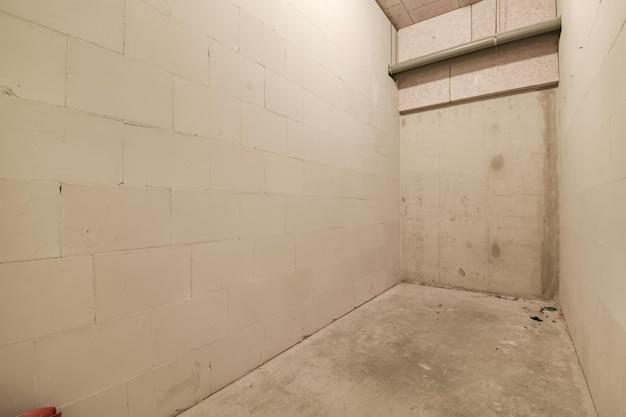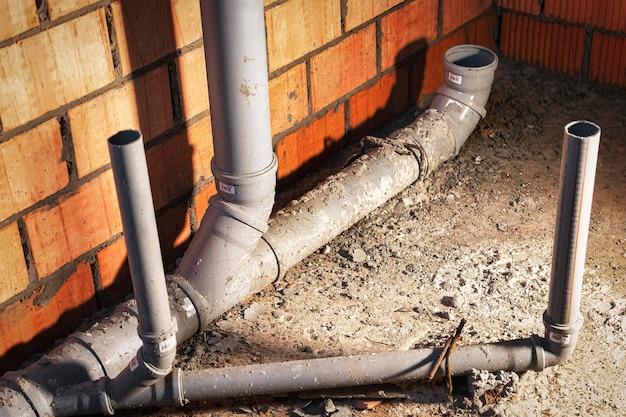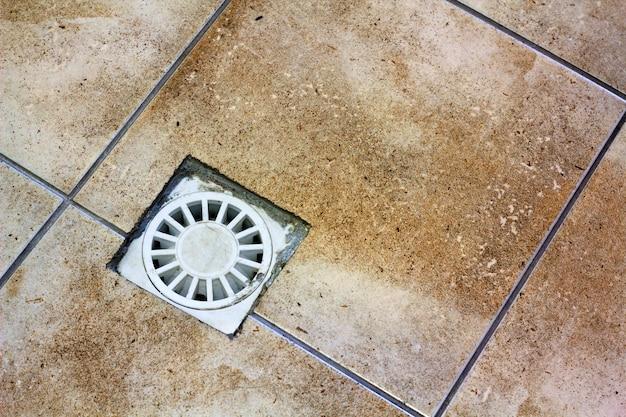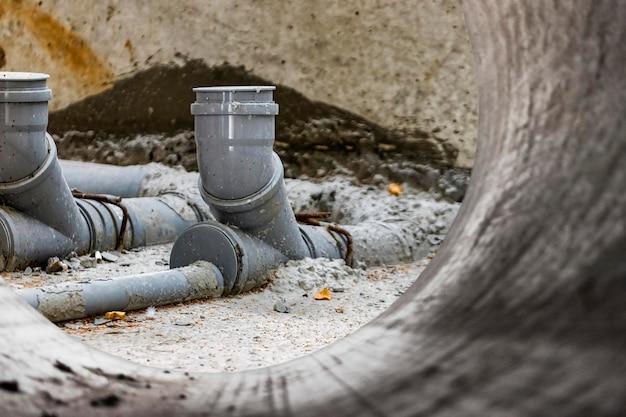Are you experiencing a backup in your basement floor drain? The last thing you want is for dirty water to fill your basement, causing immense damage and posing a health risk. Basement floor drain backup is a common problem that can occur due to various reasons such as a clog in the main sewer line, heavy rains, or even when doing laundry.
If you’re wondering, “Can you snake a basement floor drain?” or “how to unclog floor drain in the basement?”, this blog post is for you. We’ll explore the reasons why your basement floor drain keeps backing up and what you can do to prevent it.
Sewage backup in the basement is not just problematic; it’s also hazardous to your health. Exposure to raw sewage can cause several health risks, including bacterial infections, respiratory issues, and skin problems. So, it’s critical to know what to do when your basement floor drain backs up.
Are you tired of basement drain backing up when washing clothes? We’ll also cover this issue and the solutions to prevent it from happening again. Plus, we’ll tackle the question, “Why does my basement floor drain keep backing up?”
In addition, we’ll discuss water coming up through the basement floor drain after heavy rain and how to prevent this problem from reoccurring. We’ll also share useful tips on how to keep your basement floor drain clean and functional.
Stay tuned and learn more about basement floor drain backup causes, prevention, and solutions. Let’s dive in!
Understanding Basement Floor Drain Backup
If you’re a homeowner, one thing you hope never happens is a floor drain backup in your basement. Unfortunately, this is a common occurrence that can cause quite a bit of damage if not handled quickly.
What Causes Basement Floor Drain Backup
A floor drain backup can be caused by a number of things. One of the most common reasons is a clog in the main sewer line. As water tries to flow through the sewer line, it hits the clog and has nowhere to go but back up into your home. Other causes can include tree roots, damaged pipes, or even heavy rain or snow.
Signs of a Floor Drain Backup
One of the first signs of a floor drain backup is water coming up through your floor drain. Another sign is a foul smell coming from your basement. This can be caused by stagnant water that is not flowing properly. If you notice either of these signs, it’s important to act quickly to prevent any further damage.
Preventing Basement Floor Drain Backup
There are some things you can do to prevent a floor drain backup. One of the most important is to avoid flushing anything down the drain that shouldn’t be there. This can include things like paper towels, feminine products, or cooking grease. You can also have a professional plumber come and inspect your pipes to make sure there aren’t any clogs or damage.
Handling Basement Floor Drain Backup
If you do experience a floor drain backup, the first thing you should do is turn off the water supply to your home. Then, contact a professional plumber who can come and assess the situation. They may need to snake the drain or even replace damaged pipes. Whatever the case may be, it’s important to act quickly to prevent any further damage to your home.
In summary, basement floor drain backup can be an inconvenience to any homeowner. It’s important to understand the causes, signs, and preventative measures to avoid further inconvenience. If you experience a floor drain backup, don’t hesitate to contact a professional plumber.
Can You Snake a Basement Floor Drain
If you’re experiencing a basement floor drain backup, you might be wondering whether snaking the drain is a viable solution. In most cases, the answer is yes. However, it depends on the severity of the clog and the type of snake you are using to clear it.
What is Snaking
Snaking is the process of using a long, flexible tool to clear out clogs in plumbing systems, such as floor drains. The tool, commonly called a snake or auger, is inserted into the drain until it reaches the blockage. Once there, the user rotates the snake to break up the clog and free the flow of water.
Why Would You Need to Snake a Basement Floor Drain
Basement floor drains are prone to clogs for various reasons, such as debris, sediment buildup, and tree roots. A clogged drain not only causes backups but could also lead to flooding and damage to your property. Snaking the drain is an effective method of removing blockages and preventing future backups.
Can You Do It Yourself
Snaking a basement floor drain is a DIY task that requires a bit of knowledge and preparation. You need to have the right tool for the job, which is a drain auger, also called a plumbing snake. These tools come in various sizes and lengths, depending on the type of drain you are dealing with.
Before you begin, make sure you have protective gear, such as gloves and goggles, to prevent injury. Remove any standing water from the area around the drain and insert the auger into the drain until it reaches the blockage. Turn the snake handle clockwise to break up the clog and then pull it out.
If you’re not comfortable doing it yourself, it’s best to hire a professional plumber to avoid causing further damage to your plumbing system.
So, yes, you can snake a basement floor drain to clear blockages and prevent backups. It’s an effective DIY method that requires the right tools and some knowledge of plumbing. However, if you’re uncertain, it’s best to leave it to the pros to avoid causing more problems. Remember to wear protective gear and remove any standing water before you begin.
How to Unclog Floor Drain in Basement
Having a clogged floor drain in your basement can become a messy and costly problem if left unattended. Not only can it cause a backup of wastewater and sewage, but it can also lead to mold, mildew, and other health hazards. Fortunately, unclogging a floor drain can be an easy and straightforward process if you have the right tools and techniques. In this section, we’ll cover some basic steps on how to unclog a floor drain in your basement:
Step 1: Gather Your Tools
Before you begin, make sure you have the following tools handy:
- A plunger
- A drain snake
- A bucket
- Rubber gloves
Step 2: Remove the Drain Cover
Wearing rubber gloves, carefully remove the drain cover using a screwdriver or pliers. Place the cover and screws in a safe place where they won’t get lost or damaged.
Step 3: Plunge the Drain
Using a plunger, create a seal over the drain and pump up and down vigorously for about 30 seconds. This will help to dislodge any blockage that may be causing the clog.
Step 4: Use a Drain Snake
If plunging the drain doesn’t work, the next step is to use a drain snake. Insert the snake into the drain and turn the handle clockwise to break up any debris that may be blocking the pipe.
Step 5: Flush the Drain
Once you’ve dislodged the blockage, flush the drain with hot water to remove any remaining debris. You can also use a mixture of baking soda and vinegar to clear any remaining buildup.
In conclusion, unclogging a floor drain in your basement can be a simple process if done correctly. However, if you’re still experiencing issues with your floor drain, it may be time to call a professional plumber to assess the problem and offer a solution. Remember to always take preventative measures to avoid future clogs, such as regular cleaning and maintenance.
Sewage Backup in Basement Health Risks
Are you familiar with the phrase, “an ounce of prevention is worth a pound of cure?” This mantra is especially true when it comes to sewage backup in your basement. Not only is it gross and inconvenient, but it can also pose serious health risks if left unaddressed.
Contaminated Water and Air
When your basement floods with sewage backup, the water that enters your home is contaminated with bacteria, viruses, and other potentially harmful pathogens. Inhaling the contaminated air can cause respiratory issues, and coming into contact with the water can lead to skin irritations, infections, and gastrointestinal illnesses.
Mold Growth
Sewage backup in your basement can also promote the growth of mold, which can further exacerbate health issues. Mold can cause allergic reactions, respiratory problems, and even neurological issues in severe cases.
Structural Damage
Aside from health risks, sewage backup can also cause structural damage to your home. The water from the backup can weaken the foundation of the house, damage electrical wiring, and cause other structural issues if not resolved promptly.
Prevention is Key
Prevention is key when it comes to avoiding the health risks associated with sewage backup in your basement. Regular maintenance and inspection of your drainage system, as well as installing a backwater valve, can go a long way in avoiding this potential disaster.
In conclusion, sewage backup in your basement is not only an inconvenience but a serious health risk. Make sure to take proactive measures to prevent it from happening and address it promptly if it does occur. Remember, an ounce of prevention is worth a pound of cure.
What to Do When Your Basement Floor Drain Backs Up
Dealing with a basement floor drain backup can be a nightmare. Not only does it cause a mess, but it can also lead to water damage, mold growth, and other structural issues if left unaddressed. Fortunately, there are a few steps you can take to mitigate the problem and prevent it from happening again. Here’s what you need to do:
Step One: Stop Using Your Plumbing Fixtures
The first thing you should do when you notice a basement floor drain backup is to stop using your plumbing fixtures immediately. This includes toilets, sinks, showers, and anything else that drains into your plumbing system. By doing this, you can prevent further water from entering the system and exacerbating the problem.
Step Two: Identify the Cause of the Backup
Once you’ve stopped using your plumbing fixtures, you need to identify the cause of the backup. There are several reasons why basement floor drains may back up, including clogs, tree roots, and sewer line damage. If you’re dealing with a particularly stubborn clog, you may need to use a plunger or a drain snake to clear it.
Step Three: Clean Up the Mess
After you’ve identified the cause of the backup, it’s time to clean up the mess. Depending on how severe the backup is, you may need to use a wet/dry vacuum or call in a professional cleaning service to help with the cleanup process.
Step Four: Prevent Future Backups
Finally, it’s important to take steps to prevent future basement floor drain backups from occurring. This may include regular drain cleaning, tree root removal, and regular plumbing maintenance. By being proactive about your plumbing system, you can minimize the risk of future backups and avoid the hassle and expense of dealing with a major plumbing emergency.
In conclusion, a basement floor drain backup can be a major headache, but by following these simple steps, you can mitigate the problem and prevent it from happening again in the future. If the issue persists or you’re unsure about how to proceed, don’t hesitate to contact a professional plumber for assistance.
Basement Drain Backing Up When Washing Clothes
If you have ever experienced water coming out of your basement floor drain when washing clothes, you are not alone. It’s a common problem that occurs when there is a blockage in your plumbing system.
Causes of Basement Drain Backup When Washing Clothes
The most common cause of this problem is the buildup of lint, soap scum, and small fibers from clothes that get stuck in the pipes. As more and more of these materials accumulate, they gradually block the pipes, causing water to backup.
Another cause of basement drain backup when washing clothes is a clogged washing machine drain. If the water from your washing machine cannot drain properly, it will eventually back up into the basement drain.
How to Fix Basement Drain Backup When Washing Clothes
The first step in fixing this problem is to clean the drain pipes. You can use a plunger to attempt to remove any blockages. If that doesn’t work, you can try using an auger or plumbing snake to break up and remove the blockage.
You may also want to consider hiring a professional plumber to help you fix the problem. A professional plumber will have the necessary tools and expertise to quickly diagnose and fix the issue.
Prevention Tips for Basement Drain Backup When Washing Clothes
To prevent this problem from occurring in the first place, you should take some preventive measures. First, make sure you are not overloading your washing machine with too many clothes. This can cause excess lint and fibers to build up and clog your pipes.
Secondly, it’s important to use a lint trap or lint filter on your washing machine. These devices can catch and trap most of the lint and fibers before they enter your plumbing system.
Finally, it’s a good idea to have your plumbing system inspected regularly by a professional plumber to help avoid any unexpected problems. This way, any potential issues can be detected early and fixed before they turn into bigger problems.
In conclusion, basement drain backup when washing clothes can be a frustrating problem, but it is one that can be easily fixed with the right tools and resources. By following the above tips, you can help avoid this problem altogether and keep your plumbing system running smoothly.
Why does my basement floor drain keep backing up
If you live in a house with a basement, you might have experienced the unpleasant surprise of a basement floor drain backup. This common problem can cause a lot of inconvenience, not to mention the possible damage to your property and the risk of health hazards. If you’re wondering why your basement floor drain keeps backing up, here are some possible reasons.
Clogged pipes
The most common cause of basement floor drain backups is clogged pipes. Over time, debris such as dirt, hair, grease, and soap scum can accumulate in your pipes, and when they build up enough, they can obstruct the flow of water and sewage. If this happens, the water and sewage will find their way back up into your basement through the floor drain.
Tree roots
Another cause of basement floor drain backups is tree roots infiltrating your sewer line. Trees and shrubs are attracted to the moisture and nutrients in your sewer line, and their roots can invade and damage the pipes, causing blockages and leaks that result in backups.
Sewer line damage
If your basement floor drain keeps backing up despite all your efforts to keep your pipes clean, it’s possible that your sewer line is damaged. Aging, corrosion, shifting soil, and other factors can cause cracks, breaks, or collapses in your sewer line, allowing sewage and water to escape into your basement.
Main sewer line problems
Sometimes, basement floor drain backups are not caused by problems in your house’s plumbing system but by issues in the main sewer line outside your property. If there’s a blockage or other problem in the main sewer line, all the connected properties can experience backups and other sewer-related problems.
In conclusion, basement floor drain backups can be caused by various factors, ranging from clogged pipes to tree roots to sewer line damage, and even main sewer line problems. If you’re experiencing a basement floor drain backup, it’s important to identify the cause and address it promptly to prevent further damage and health hazards. In the next section of this blog post, we’ll talk about how to prevent basement floor drain backups.
Water Coming Up Through Basement Floor Drain After Heavy Rain
If you’ve experienced water coming up through your basement floor drain after heavy rain, it can be a frustrating and potentially costly problem. Here are some possible causes and solutions to this issue.
Clogged Drain
One of the most common causes of water coming up through your basement floor drain is a clogged drain. Over time, debris and hair can accumulate in your drain, causing it to back up and overflow during heavy rain. To prevent this from happening, it’s important to regularly clean your drain to ensure that it’s free from any blockages.
Damaged Drain
Another possible cause of water coming up through your basement floor drain after heavy rain is a damaged or broken drain. This can happen due to age, wear and tear, or even tree roots invading your pipes. If you suspect that your drain is damaged, it’s best to seek professional help to assess the issue and make any necessary repairs.
High Water Table
A high water table can also lead to water coming up through your basement floor drain after heavy rain. This occurs when the water table is higher than your basement floor, causing excess water to find its way into your drain. In this case, a sump pump may be necessary to help pump out excess water and divert it away from your home.
Improperly Installed Drain
Finally, an improperly installed drain can also cause water to come up through your basement floor drain after heavy rain. If the drain is not installed at the correct incline or level, water may not be able to flow out properly and may instead back up into your basement. To avoid this issue, it’s important to ensure that your drain is properly installed by a professional.
In conclusion, water coming up through your basement floor drain after heavy rain can be a frustrating problem. However, by identifying the potential causes and implementing the appropriate solutions, you can prevent further damage and protect your home from the effects of excess water.



